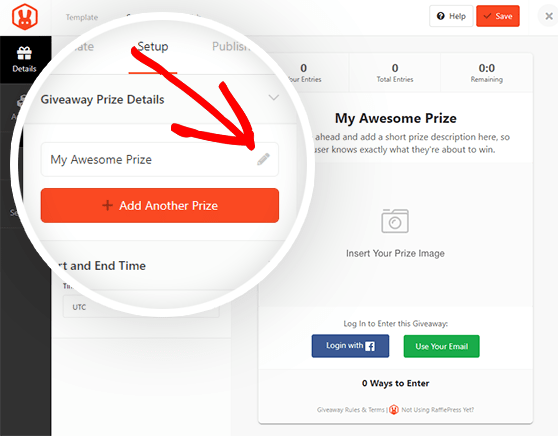Modern marketing thrives on engagement, and few tactics deliver results faster than well-structured giveaways. Unlike traditional campaigns, these events combine urgency with excitement to generate immediate traffic and measurable outcomes. Data shows a single contest can produce enough leads to fuel business growth for months.
Successful campaigns require more than random prize drawings. Professionals use contests as strategic tools to align with sales goals, email list growth, and brand visibility. When executed systematically, giveaways become repeatable engines for customer acquisition and market research.
This approach transforms short-term promotions into sustainable marketing assets. Small businesses and enterprises alike benefit from the scalable nature of prize-based campaigns. The key lies in developing routines that balance creativity with data-driven decision-making.
Key Takeaways
- Strategic giveaways outperform random promotions in lead generation
- Properly structured campaigns deliver three months of qualified prospects
- Systematic planning aligns contests with broader business objectives
- Prize-based marketing drives faster engagement than traditional methods
- Scalable formats work for organizations of all sizes and industries
Understanding Sweepstakes: Importance and Benefits
Effective promotional strategies demand measurable outcomes, and sweepstakes deliver precisely that. Brands leverage these events to spark interest while gathering critical consumer data. Unlike complex campaigns, they require minimal effort from participants—a key factor driving widespread adoption.
Why Contests and Giveaways Drive Engagement
Human psychology fuels participation in these promotions. The thrill of potential rewards triggers dopamine responses, creating excitement that traditional ads rarely match. Giveaways remove skill requirements, inviting anyone to join with simple actions like email submissions or social media shares.
This accessibility explains why engagement rates for contests often triple standard marketing metrics. People perceive sweepstakes as low-risk opportunities with high-value payoffs. Brands benefit from immediate visibility spikes while building lasting connections through shared anticipation.
Immediate Results and Lead Generation
Sweepstakes excel at capturing leads within hours of launch. A well-designed campaign can collect thousands of emails while boosting social media followers. 63% of consumers willingly share contact details for prize opportunities, according to recent marketing studies.
These promotions also serve dual purposes: generating quick wins and nurturing long-term relationships. Participants who don’t win often remain engaged with brands, especially when follow-up offers acknowledge their effort. This strategy converts casual entrants into loyal customers over time.
Setting Effective Contest Goals and Objectives
Strategic contests require precise objectives to deliver measurable outcomes. Brands that align promotional efforts with core business needs see 72% higher conversion rates compared to generic campaigns. Start by identifying gaps in your current marketing strategy – weak email lists or stagnant social growth often signal where contests can make the greatest impact.
Defining Business Goals to Boost Email Leads and Social Media Reach
Prioritize objectives that solve specific challenges. For example:
- Convert 15% of contest entrants into newsletter subscribers
- Increase Instagram followers by 2,000 in 30 days
- Collect 500 customer feedback surveys through entry forms
A skincare company doubled its email list by offering free product bundles. Their campaign required participants to subscribe before sharing on social platforms. This dual-action approach created multiple growth channels from one initiative.
Aligning Strategies with Marketing Objectives
Use this framework to connect contests with broader goals:
| Marketing Goal | Contest Metric | Example |
|---|---|---|
| Email List Growth | New Subscribers | Require email entry for prize eligibility |
| Social Engagement | Shares/Comments | Offer bonus entries for tagging friends |
| Sales Conversion | Coupon Redemptions | Provide discount codes to all entrants |
"Clear targets transform contests from hopeful experiments into precision tools. Every entry should advance at least two business objectives."
Set numerical benchmarks like acquiring 1,200 qualified leads or achieving 25% participant reuse of promo codes. These metrics enable precise ROI calculations and campaign adjustments.
How to Create a Sweepstakes Entry Routine
Successful promotional campaigns follow structured blueprints rather than guesswork. A proven six-phase approach ensures every element works toward measurable outcomes while minimizing legal risks. This method turns temporary events into recurring growth drivers.
Step-by-Step Process Overview
The development cycle contains distinct stages:
- Legal compliance verification
- Program architecture design
- Multi-channel launch execution
- Reward sourcing and delivery
- Promotional scaling tactics
- Performance evaluation metrics
Each phase builds on previous work. For example, legal checks inform program design choices. Omnichannel activation then spreads the campaign across email, social platforms, and partner sites.
Integrating Entry Options with Overall Campaign Goals
Strategic entry mechanisms convert casual interest into business value. Align participant actions with core objectives using this framework:
| Entry Method | Business Goal | Result Tracking |
|---|---|---|
| Email Submission | Lead Generation | New subscriber count |
| Social Media Tag | Brand Awareness | Share volume |
| Survey Completion | Market Research | Data points collected |
Limit entry options to three primary actions. This maintains simplicity while gathering diverse data. Bonus entries for referrals can further boost reach without complicating the main process.
Automated tools streamline participant management across channels. Real-time dashboards show which entry methods perform best, allowing mid-campaign adjustments. This adaptive approach maximizes returns on every initiative.
Choosing a Desirable Prize and Planning Entry Options
Reward selection directly impacts campaign success rates. A travel agency increased qualified leads by 40% by offering destination packages instead of cash prizes. This approach attracts participants genuinely interested in your offerings while filtering out random entrants.

Selecting Relevant Prizes for Your Target Audience
High-value items work best when aligned with audience interests. A fitness brand might offer premium equipment instead of generic tech gadgets. Consider these factors:
| Audience Type | Effective Prize | Budget Range |
|---|---|---|
| Small Business Owners | Marketing Software Subscription | $500-$1,000 |
| Parenting Communities | Educational Toy Bundle | $200-$400 |
| Fitness Enthusiasts | Year-Long Gym Membership | $800-$1,200 |
Brand-related rewards outperform generic options by 68% in lead quality. Offer tiered prizes to boost perceived value – one grand reward plus smaller instant-win items keeps engagement high.
Implementing Bonus Entries and Referral Incentives
Strategic entry options convert participants into promoters. A skincare company achieved 3x reach by offering extra entries for social shares. Consider this framework:
| Incentive Type | Participation Boost | Lead Quality |
|---|---|---|
| Referral Bonuses | +55% Entries | High |
| Social Media Tags | +40% Reach | Medium |
| Survey Completions | +25% Data | Premium |
91% of customers prefer personalized offers. Combine entry methods with audience preferences – parents might value free childcare services more than cash prizes. This alignment ensures quality participation while expanding reach.
Establishing Clear Participation Rules & Legal Compliance
Clear guidelines form the backbone of successful promotional campaigns. Well-structured rules protect businesses legally while helping participants understand expectations. Over 78% of marketing teams report fewer disputes when using transparent entry requirements.
Crafting Simple, Participant-Friendly Rules
Effective guidelines balance legal precision with everyday language. Start with these essential elements:
- Prize descriptions with retail values
- Exact start/end dates (including time zones)
- Winner selection method (random drawing/judging criteria)
- Eligibility restrictions (age, location, employee exclusions)
Federal regulations require "no purchase necessary" statements and alternate entry methods. A mail-in option satisfies this rule while maintaining accessibility. Always include sponsor details and privacy policy links.
State-specific laws add complexity. New York requires bond filings for prizes exceeding $5,000, while Florida mandates winner lists upon request. Social platforms enforce additional rules – Instagram promotions must include "not affiliated with Meta" disclaimers.
"Ambiguous rules create legal risks and participant confusion. Test your guidelines with non-legal staff to ensure clarity."
Digital templates streamline compliance across multiple campaigns. Pre-built frameworks help teams address regional variations and platform requirements efficiently. This approach reduces setup time by 65% while maintaining legal protection.
Optimizing Sweepstakes Setup and Platform Settings
Technical precision separates high-performing campaigns from generic promotions. Professional tools streamline setup while maintaining brand consistency across devices. Platforms like Woobox offer drag-and-drop editors and pre-built templates, cutting development time by 60% compared to manual coding.
Leveraging Platforms Like Woobox for Easy Setup
Woobox’s interface allows embedding contests directly into websites or standalone landing pages. Users can deploy campaigns across Facebook, email newsletters, and mobile apps through unified dashboards. Built-in analytics track entry sources and conversion rates in real time.
Customizing the Look and Feel of Your Campaign
Align visual elements with brand colors and messaging. Landing page designs should mirror your website’s navigation patterns for familiarity. Use high-contrast buttons and minimal form fields to reduce participant friction.
Ensuring Mobile and Social Media Integration
46% of users access promotions via smartphones. Optimize forms for thumb-scrolling and quick submissions. Social media share buttons should auto-populate branded hashtags and @mentions. Test loading speeds across devices to prevent abandonment.
Platforms like Woobox automatically adjust layouts for different screens. This ensures seamless experiences whether participants discover your campaign through Instagram Stories or email links. Always verify social platform rules – TikTok requires separate disclaimers compared to Facebook.
Promoting Your Sweepstakes: Strategies to Boost Engagement
Effective promotion turns contests into viral phenomena. Start by activating existing audiences through email lists and social followers. These groups create instant momentum – 68% of participants share campaigns with friends when incentives align with their interests.
Utilizing Social Media and Email Broadcasts
Coordinate platform-specific teasers across channels. Instagram Stories work best for visual prize reveals, while Twitter polls build anticipation. Email sequences should include:
- Launch announcements with clear entry deadlines
- Mid-campaign progress updates
- Final-hour urgency triggers
Brands using three-touch email strategies see 47% higher entry rates. Include social share buttons in messages – participants who tag friends generate 2.3x more referrals.
Partnering with Influencers and Niche Communities
Collaborations expand reach while maintaining audience quality. Use this framework to evaluate partnerships:
| Partner Type | Engagement Rate | Cost Efficiency |
|---|---|---|
| Micro-Influencers | 8.7% | High |
| Industry Blogs | 6.2% | Medium |
| Local Businesses | 4.1% | Low |
Focus on partners whose followers match your ideal customer profile. A cooking app increased entries by 90% by teaming with food bloggers rather than general lifestyle influencers.
Track referral sources daily using UTM parameters. Shift resources to top-performing channels – this agile approach boosts ROI by 33% compared to static campaigns. Always test new promotion methods while refining proven tactics.
Tracking Performance and Analyzing Contest Data
Data transforms promotional efforts from hopeful guesses into strategic assets. Real-time metrics reveal what works while campaigns remain active, allowing instant adjustments. Specialized platforms track entry sources and conversion patterns, while Google Analytics monitors traffic spikes and participant behavior.
Key Metrics for Measuring Success
Focus on three core indicators: entry-to-subscriber ratios, social referral numbers, and post-campaign customer retention. High bounce rates often signal mismatched prizes or complex entry steps. Winners’ engagement levels post-contest also matter – 38% become repeat buyers when acknowledged properly.
Compare results against original targets using visual dashboards. Did email sign-ups hit 1,200? Did 25% of entrants reuse promo codes? These numbers prove ROI and guide future efforts. Platforms like Woobox simplify reporting with automated charts showing hourly participation trends.
Adjust strategies based on hard evidence rather than assumptions. A/B test prize options or entry methods across small audiences first. This approach reduces risk while maximizing returns on marketing investments.

